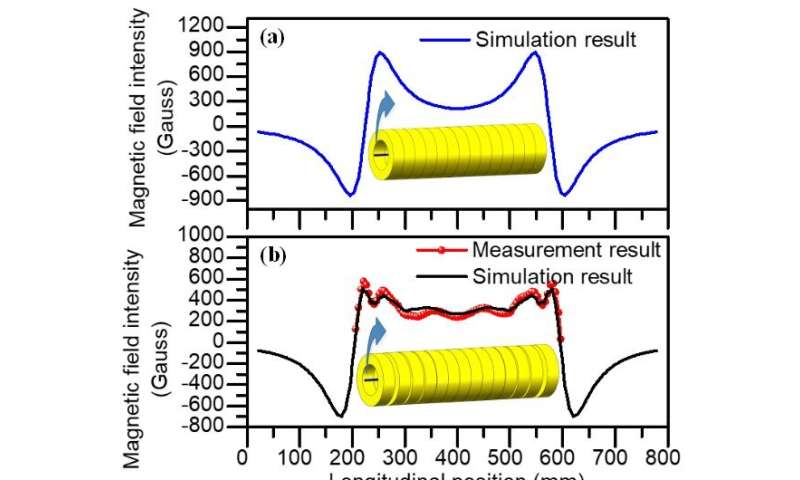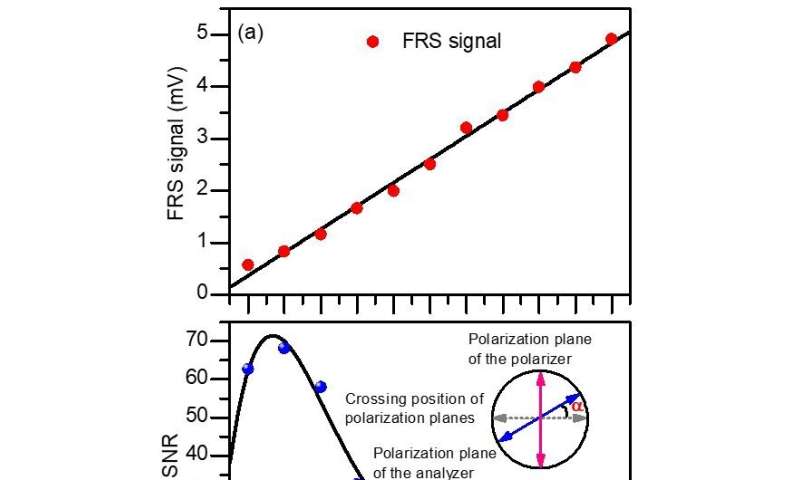This article has been reviewed according to Science X's editorial process and policies. Editors have highlighted the following attributes while ensuring the content's credibility:
fact-checked
peer-reviewed publication
trusted source
proofread
Scientists propose novel NO2 sensor based on static magnetic field Faraday rotation spectroscopy

A low-power Faraday rotation spectroscopy (FRS) nitrogen dioxide (NO2) sensor basing on ring array permanent magnets was proposed by researchers led by Prof. Gao Xiaoming from the Hefei Institutes of Physical Science of the Chinese Academy of Sciences (CAS), according to a study published in Analytical Chemistry.
FRS enables detection of paramagnetic molecules by detecting changes in the polarization state of linearly polarized light caused by a gaseous medium immersed in an external longitudinal magnetic field. It is not disturbed by diamagnetic molecules such as CO2 and H2O, so it exhibits a high species specificity. In addition, it has very high detection sensitivity due to the use of a pair of nearly-crossed polarizers that greatly suppress laser intensity noise.
The current FRS signal is mainly generated by the Zeeman splitting of the sample absorption lines modulated by an alternating magnetic field generated by a solenoid coil. However, when exciting the magneto-optical effect, this sinusoidal electromagnetic field suffers from high power consumption, generation of large amounts of Joule heat, electromagnetic interference, etc.
To solve these problems, the researchers proposed a static magnetic field FRS sensing device based on rare-earth permanent magnets.
-

Schematic diagram of NdFeB permanent magnet ring array and its magnetic field distribution characteristics. Credit: Cao Yuan -

FRS signal and signal-to-noise ratio as a function of the analyzer angle α. Credit: Cao Yuan
According to the magnetic field distribution characteristics of neodymium-iron-boron (NdFeB) permanent magnet rings, they combined 14 identical NdFeb permanent magnet rings in the form of non-equidistance, and obtained a static magnetic field with an average magnetic field intensity of 346 gauss over a length of 380 mm. The interaction between linearly polarized light and the sample was greatly enhanced by fitting the Herriott cell coaxially to the permanent magnet array.
A Q-branch spectral feature in the ν3 fundamental band of NO2 at 1,613.25 cm-1 was probed by a mid-infrared quantum cascade laser. The NO2 detection limit of 0.4 ppb was achieved at an optical length of 23.7 m.
"We expect it to be developed into a robust field-deployable environment monitoring system," said Cao Yuan, first author of the study.
More information: Yuan Cao et al, NO2 Sensor Based on Faraday Rotation Spectroscopy Using Ring Array Permanent Magnets, Analytical Chemistry (2023). DOI: 10.1021/acs.analchem.2c04821
Journal information: Analytical Chemistry
Provided by Chinese Academy of Sciences





















